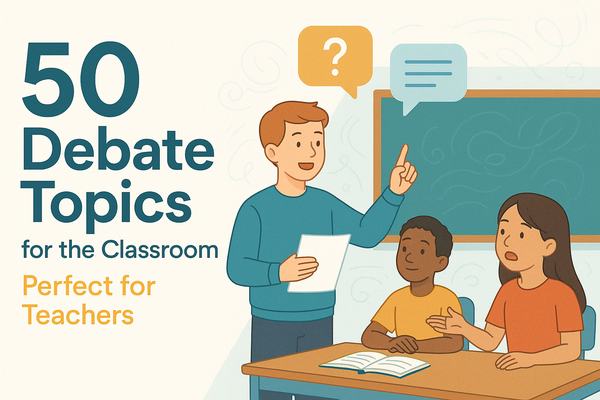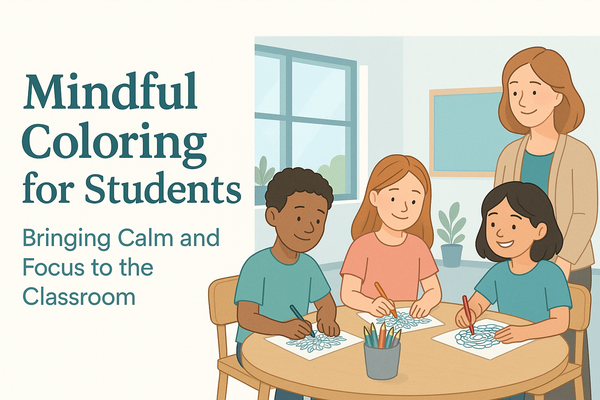Hosting Interactive Library Activities for Students

School libraries are truly magical spaces in any school, sparking curiosity and excitement among students. For many of us, some of our fondest school memories involve walking into the library and eagerly picking out books.
Whether you have a dedicated librarian or are a teacher managing the library, planning library activities for students can make this space even more special. In this blog, we will explore the top engaging activities and tips for organizing them.
Top 12 Creative and Engaging Library Activities for Students
Discover 12 exciting library activities designed to captivate your students' interest and encourage a love for reading.
1. Book Tasting
Hosting a book tasting is a creative and interactive way to introduce students to a wide variety of books and spark their interest in different genres. Think of it as setting up a “menu” of stories, where students can sample books just like they would dish at a restaurant!
This activity is simple to organize yet highly engaging, making it a perfect fit for regular library sessions. To set the stage, arrange books from various genres - fantasy, mystery, science fiction, biographies, and more - on tables around the library. Decorate the tables with small tablecloths to create a cozy atmosphere.
Divide the students into small groups and let them rotate between tables, spending a few minutes “tasting” each book. Encourage them to read the blurb, skim the first few pages, and even explore the illustrations or covers to get a feel for the story.
2. Book Walk
A book walk is an interactive and engaging way to immerse students in a story while encouraging deeper comprehension and meaningful discussions. You can start by choosing a popular or favorite book that resonates with your students.
Divide the book into key sections or chapters and set up “stations” around the library. Each station will feature a specific excerpt accompanied by prompts or questions that encourage students to reflect on the plot, characters, or themes.
Students will walk from station to station, reading the assigned excerpt and responding to the prompts. Encourage them to discuss their thoughts with their peers at each stop, fostering collaboration and critical thinking.
3. Reading Challenge
A reading challenge is a fantastic way to ignite a love for reading in students. Set a clear goal for the challenge. It could involve reading a certain number of books, exploring different genres, or dedicating a set amount of time to reading each day.
For a more interactive experience, design a bingo board filled with diverse reading tasks, such as “Read a book by a new author,” “Read outside for 15 minutes,” or “Finish a mystery novel.” Students can cross off completed tasks, working towards prizes or certificates.
By the end of the challenge, which can be the end of the school year or a term, host a celebration to honor everyone’s achievements, whether it’s a small awards ceremony, a book-themed party, or simply displaying students’ favorite reads.
4. Book Reviews
Book reviews are a creative and collaborative way to engage students in reading while building a sense of community around books. This activity not only encourages students to think critically about what they have read but also turns their opinions into a source of inspiration for others.
Start by sending out colorful slips of paper or notecards to classrooms, inviting students to write short reviews of their favorite books or a recent read. Guide them to include the book’s title, author, a brief summary, and why they recommend it.
Once the reviews are complete, create a unique bulletin board or display in the library. You could arrange the reviews under themed sections like “Adventure Picks,” “Laugh Out Loud Reads,” or “Mystery Must-Haves.” You can create book review templates for this activity and make it super fun.
5. Book Displays
Book displays are a fantastic way to celebrate the love of reading while turning your library into a gallery of student recommendations. This interactive activity not only inspires other students to explore new books but also gives readers a platform to share their favorites.
Once the displays are complete, arrange them in prominent library areas. Rotate the exhibits regularly to keep the library fresh and engaging. You can even make it interactive by adding a “Have You Read This?” section, where peers can add their own mini-reviews or comments.
6. Book Cover Contest
Start by encouraging participants to choose their favorite book and redesign its cover. The new cover can be hand-drawn, painted, digitally designed, or crafted using mixed media. You can even offer templates to help younger students get started.
Once the covers are ready, transform your library or a designated school area into an art gallery. Display the alternate book covers prominently, labeling each with the participant’s name and the title of the book. Add an interactive element by allowing peers, staff, and visitors to vote for their favorite designs.
To make the contest even more exciting, offer small prizes for the most creative, most colorful, or most accurate covers. Alternatively, consider giving everyone a participation certificate or bookmark to celebrate their efforts. This contest can also be a part of book week, where students come up with book week costumes along with the book covers.
7. Library Scavenger Hunt
Before students can dive into all the amazing resources your library offers, they need to know how to easily navigate its shelves. A Library Scavenger Hunt is the perfect way to teach students how to explore the space, find books, and understand the library's organization.
For younger students, start with a simple scavenger hunt that encourages them to find specific types of books, such as picture books, biographies, or books with a certain color cover. Use a printable template to guide them through the activity.
After students complete the hunt, you can offer small rewards or certificates for their efforts. By the end of the scavenger hunt, students will feel confident navigating the library, and you will have sparked their curiosity to explore and borrow books. You can use this game as a part of indoor recess games on a rainy day.
8. Set Up a Tracking System
One of the best ways to get students excited about reading is by making it a collective experience. A simple yet effective way to achieve this is by setting up a tracking system in your library that allows students to see their progress as a group visually.
Create a fun bulletin board where you can track the books your classes have read. Post the book cover on the board each time a class finishes a book. You can organize it by class or grade level and even make it more interactive by having students vote on what book to read next.
The tracking system not only encourages reading but also builds a community spirit. It gives students a tangible way to see how much they have achieved as a class and fosters a sense of friendly competition.
9. Independent Student Research
Once students have become familiar with the library’s layout and shelving system, it is time to give them the freedom to dive into independent research. This is a fantastic way to foster critical thinking, curiosity, and self-directed learning.
Let students choose a topic that excites them, empowering them to take charge of their learning journey. As they explore various books, databases, and online resources, they will not only discover new information but also develop valuable research skills that will serve them throughout their academic lives.
To make this activity even more engaging, consider turning it into a mini project where students present their research in creative formats like posters, digital presentations, or even short videos.
10. Taking Care of Books
While it might not be the most exciting library activity, talking about how to care for books properly is one of the most essential lessons you can teach your students. Books are valuable resources, and teaching students how to treat them with respect ensures that these resources remain available and in great condition for everyone to enjoy.
To make this lesson more interactive and memorable, involve your students in creating a “Care for Books” poster that highlights the best practices for treating books with respect. Have them brainstorm ideas for the poster, such as “Don’t eat or drink near books.”
11. Make Book Wish Lists
One exciting way to engage students and inspire them to take ownership of their library is by having them create a Book Wish List. This activity encourages students to consider what types of books they would love to see added to the library’s collection.
You are not only involving them in the decision-making but also fostering a love for reading books. You can start by asking students to think about all the books they have ever wanted to read. Once the wish list is ready, consider displaying it in the library.
You can provide guidelines to keep the list focused, such as recommending new releases, diverse genres, or books that tie into classroom subjects. The book wish list can also be used as one of the classroom door decoration ideas.
12. Play Go Fish
Choosing a book in the library can feel overwhelming for students, especially when there are so many exciting options. Whether you have reluctant readers who need a little extra motivation or enthusiastic readers who can't decide where to start, turning library time into a game of Go Fish is a creative and fun way.
Create a deck of cards that feature book genres, popular authors, or even specific book titles from your library collection. Distribute the cards to the students, and the goal of the game is to match books by genre, author, or other themes.
For example, if a student has a card with "Mystery" on it, they would ask their classmates if they have any mystery-related books. When a student makes a match, they can share what they know about the book or genre, sparking discussion about their favorite reads.
Tips to Organize Successful Library Activities
Here are some detailed tips to help you organize library activities that will capture students' attention and keep them coming back for more.
- Start by understanding your students' age group, interests, and reading levels. What excites them? Tailoring your library activities to your students' preferences will make them more appealing and engaging.
- Before planning any activity, define what you want to achieve. Are you trying to introduce a new book genre, improve reading comprehension, or encourage teamwork and collaboration? Having clear objectives will help you design the activity with purpose and structure.
- Engage students by incorporating interactive elements into your activities. The more actively involved they are, the more likely they are to retain what they’ve learned and enjoy the experience.
- Themes can make library activities more exciting and help to bring books to life. Consider creating activities around holidays, seasons, or popular book genres.
- Encourage students to take an active role in organizing and leading activities. This could include asking them to create posters, lead book discussions, or participate in activities like book cover design contests.
- Good planning is essential for smooth execution. Create a detailed timeline for the activity, outlining what needs to be done in the weeks leading up to the event. Make sure you have all the resources, books, and materials ready in advance.
- After the activity, take some time to evaluate what went well and what could be improved for next time. Get feedback from students on what they enjoyed most and what they would like to do differently.
- To conduct library activities, you can also use the reading strategies anchor chart to help students combine visuals and texts.
If you are a teacher looking for AI tools that help ease your workload, look no further, as teacherbot.io is the perfect tool to help you create endless resources.
Conclusion
Incorporating fun and engaging library activities into your routine is the perfect way to spark a love for reading, ignite creativity, and build essential skills in your students. Follow these simple tips to organize activities in the library and make your students excited to learn.




